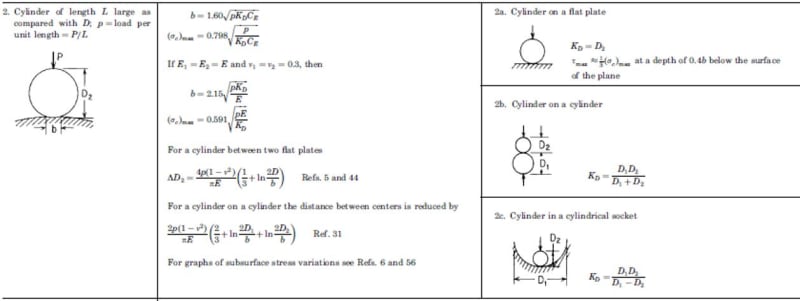JD_WTG
Mechanical
- May 18, 2022
- 10
Hello, I am looking to cross pin (using a 10.9 grade stud) a laminate joint loaded in double shear to increase the strength in the joint beyond that given by the adhesive between laminate sections.
Questions I have is related to bearing strength and stress. How is bearing strength of a material typically defined in structural engineering? I have seen comments stating its higher than yield and some saying lower? Is there a standard that defines the bearing strength in regards to yield or UTS.
Also, in terms of stress, for a 10mm stud in a 12mm hole, can the bearing stress be calculated using the simple P/d*t (d being the bolt diameter).
I used the max stress equation for a cylinder in a cylindrical socket (attached) and it gives me crazy high stresses. Much higher than the simplified one above.

Questions I have is related to bearing strength and stress. How is bearing strength of a material typically defined in structural engineering? I have seen comments stating its higher than yield and some saying lower? Is there a standard that defines the bearing strength in regards to yield or UTS.
Also, in terms of stress, for a 10mm stud in a 12mm hole, can the bearing stress be calculated using the simple P/d*t (d being the bolt diameter).
I used the max stress equation for a cylinder in a cylindrical socket (attached) and it gives me crazy high stresses. Much higher than the simplified one above.

